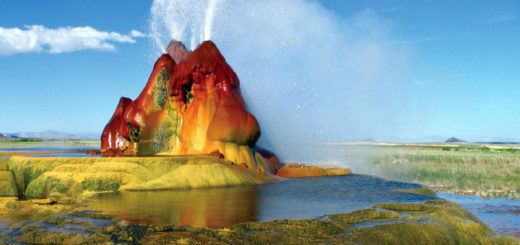Link Between Captain Cook’s 1778 Records And Global Warming Discovered
– In 1778, while searching for an entrance to the Northwest Passage, Captain James Cook and his crew were halted north of the Bering Strait by “ice which was as compact as a wall and seemed to be 10 or 12 feet high at least,” according to the Captain’s journal.

Determined to find the Northwest Passage, Captain Cook’s ships followed the ice edge and sailed all the way to Siberia. The motivation for finding the passage was trade with the Far East.
In his records, Captain Cook wrote the British expedition had to navigate through thick fog. Captain Cook was not the first explorer to navigate through the icy water off Alaska, but he was the first one who mapped the ice edge.
Scientists have examined Captain Cook’s journals and discovered a link between his old records and global warming.
Mathematician Harry L. Stern from the University of Washington has studied maps and logs from Cook’s voyage as well as other historical data and satellite images.The material has helped Stern to track changes in ice cover in the Chukchi Sea, between Alaska and Russia, over nearly 240 years.
Stern’s analysis reveals Cook’s records offer evidence of global warming. His study shows that for more than 200 years after Cook’s visit the summer ice cover in the Chukchi Sea fluctuated, but generally extended south to near where Cook encountered it.
“Basically, from the time of Cook until the 1990s, you more or less could count on hitting the ice somewhere around 70 degrees north in August.
Now the ice edge is hundreds of miles farther north,” Stern said.
“This old data helps us look at what conditions were like before we started global warming, and what the natural variability was,” said Jim Overland, a Seattle-based oceanographer for the National Oceanic and Atmospheric Administration who was not involved in Stern’s project.
That meshes with modern observations that confirm rapid shrinkage of the Arctic ice pack over the past three decades, Overland said.
The total volume of ice in summer is now 60 to 70 percent lower than it was in the 1980s, while Arctic temperatures have increased at twice the rate of the rest of the planet as a result of rising greenhouse-gas levels.
“That’s probably the largest indicator that global warming is a real phenomenon,” Overland said.
Climatologist Kevin Wood from the University of Washington said Stern’s study is very important as it clearly demonstrates that the data from Cook and other explorers show there were no similar warm periods in their times“It tells you that what’s happening now is a fairly unique and extreme case,” Wood said.
Historical ice measurements are especially valuable, Wood said, because existing models don’t seem to do a good job of forecasting ice cover.
While models predict the Arctic won’t be ice-free in summer until 2050 or later, the current pace of change suggests it will happen much sooner.
The results of Stern’s study have been published in the journal of Polar Geography.Captain James Cook became the first European to discover the Hawaiian Islands in 1778. He was tragically killed on February 4, 1779.



 Creators of mankind
Creators of mankind Description of “Tall white aliens”
Description of “Tall white aliens” Where they came from?
Where they came from? About hostile civilizations
About hostile civilizations The war for the Earth
The war for the Earth “Tall white aliens” about eternal life
“Tall white aliens” about eternal life Video: “Nordic aliens”
Video: “Nordic aliens” Aliens
Aliens Alien encounters
Alien encounters The aliens base
The aliens base UFO
UFO Technology UFO
Technology UFO Underground civilization
Underground civilization Ancient alien artifacts
Ancient alien artifacts Military and UFO
Military and UFO Mysteries and hypotheses
Mysteries and hypotheses Scientific facts
Scientific facts


















